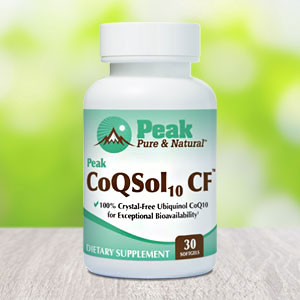Get Easy Health Digest™ in your inbox and don’t miss a thing when you subscribe today. Plus, get the free bonus report, Mother Nature’s Tips, Tricks and Remedies for Cholesterol, Blood Pressure & Blood Sugar as my way of saying welcome to the community!
10 signs you may have this blood circulation disorder

Have you ever felt dizzy when you stand up too suddenly?
You may be among the approximately six percent of the general population living with orthostatic hypotension (OH), a fairly common condition, especially in people over age 65 where your blood vessels react too slowly to changes in blood pressure.
But it’s also possible that you may have a condition that is far less common and, though it also involves the body’s reaction to a change of posture, has different symptoms and different diagnostic criteria.
This condition is known as Postural Orthostatic Tachycardia Syndrome or POTS.
It’s important to know the difference between these two since they affect the body differently and therefore call for different treatments.
POTS vs. OH: What’s the difference?
Orthostatic hypotension and POTS both involve a failure of the autonomic nervous system to regulate blood pressure in response to postural change.
However, one key difference between the two is in their diagnostic criteria.
Presentation of symptoms, including dizziness and lightheadedness, takes place within 3 minutes for orthostatic hypotension and within 10 minutes for POTS.
Also, and perhaps more significantly, OH results in a drop in blood pressure, while POTS results in an elevated heart rate (tachycardia).
Also, POTS most commonly affects females between the ages of 15 and 50, while OH is more common in people over age 65.
What causes POTS?
POTS is a form of dysautonomia — a disorder of the autonomic nervous system. This branch of the nervous system regulates functions we don’t consciously control, such as heart rate, blood pressure, respiration and digestion.
Experts have yet to pinpoint the actual cause of POTS, but they have identified three different classifications:
Neuropathic POTS — associated with damage to the small fiber nerves (small-fiber neuropathy). These nerves regulate the constriction of the blood vessels in the limbs and abdomen.
Hyperadrenergic POTS — associated with elevated levels of the stress hormone norepinephrine.
Hypovolemic POTS — associated with abnormally low levels of blood (hypovolemia).
Secondary POTS — associated with another condition known to potentially cause autonomic neuropathy, such as diabetes, Lyme disease or autoimmune disorders such as lupus or Sjogren’s syndrome.
To confound things even further, a person may experience more than one of these at once. In addition, POTS can be triggered by toxins, including heavy metals and chemotherapy.
What are the symptoms?
POTS symptoms vary from person to person and may include:
- Severe and/or long-lasting fatigue
- Lightheadedness with prolonged sitting or standing that can lead to fainting
- Brain fog: trouble focusing, remembering or paying attention
- Forceful heartbeats or heart palpitations (a feeling of the heart pounding or skipping a beat)
- Nausea and vomiting
- Headaches
- Excessive sweating
- Shakiness
- Intolerance of exercise or a prolonged worsening of general symptoms after increased activity
- A pale face and purple discoloration of the hands and feet if the limbs are lower than the level of the heart
How is it diagnosed?
The most common way is with a tilt table test.
The person is secured on a table while lying flat. Then the table is raised to an almost upright position. Heart rate, blood pressure and often blood oxygen and exhaled carbon dioxide levels are measured during this test.
You might have POTS if you meet all three of these criteria:
- Your body produces an abnormal heart rate response to being upright
- Your symptoms worsen when upright
- You don’t develop orthostatic hypotension in the first three minutes of testing
Treatments for POTS
If you experience any of the symptoms mentioned above to the extent they are distressing and interfere with your daily activities, you should talk to a healthcare professional. They can help you determine if you have POTS, OH or another disorder.
For POTS, an individualized regimen of diet, exercise and/or medication based on each person’s symptoms is typically recommended. Medications that have been used for POTS include beta blockers, midodrine and fludrocortisone.
Doctors will often also recommend increasing fluid intake by two to three liters per day, and increasing salt intake — which is not something to do on your own. Compression stockings are often recommended to help maintain blood flow.
But another source of therapy involves the vagus nerve — the longest nerve in the body that begins in the part of the brain that connects to the spinal cord and extends throughout the body. The vagus nerve sends signals to various parts of the body along the way, especially having to do with the autonomic nervous system.
Since POTS is considered a disorder of the autonomic nervous system, studies have looked into stimulating the nerve via transcutaneous vagus nerve stimulation (tVNS treatment), and seen an improvement in symptoms. Most recently researchers are considering this therapy to help symptoms associated with long COVID fatigue.
Editor’s note: Did you know that when you take your body from acid to alkaline you can boost your energy, lose weight, soothe digestion, avoid illness and achieve wellness? Click here to discover The Alkaline Secret to Ultimate Vitality and revive your life today!
Sources:
Postural Orthostatic Tachycardia Syndrome (POTS) — Johns Hopkins Medicine
What is the Difference Between Orthostatic Hypotension and POTS — differencebetween.com














